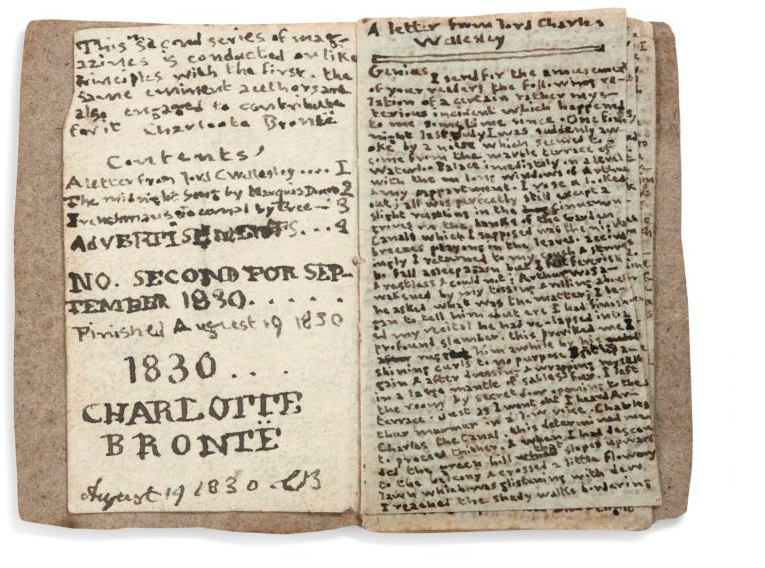
LIFE AS MYTH
![]()
JOURNAL
![]()
JOURNAL 2011
![]()
Life as Myth
Naming a life
![]()
SPRING 2011
Naming her life
![]()
LIFEWORKS
![]()
ATLAS
![]()

SPRING 2011
RETREAT INTO IMAGINATION
For the five years immediately following the deaths of Maria and Elizabeth, the Brontë children received their education at home from their father, their aunt, and two private music and art instructors. It was during this period that the children developed an imaginary world: the African kingdom of "Angria". The children created extensive characters and stories about Angria which they then meticulously logged in diminutive books. These early stories were the first expressions of their literary talents.
In time, Anne, Emily and Charlotte all went away to school again and eventually all took work as teachers and governesses. One of the last such posts was Anne's employment as governess to the children of Reverend Edmund Robinson and his wife Lydia at Thorp Green [1840-1845]. In 1842 she secured a tutoring position at Thorp Green for her brother Branwell. However, Branwell's affair with Lydia Robinson resulted in his dismissal and Anne's resignation in 1845.
Elizabeth Branwell (1776 - 1842), "Aunt Branwell", was the older sister of Maria and after caring for her dying sister, assumed the care of the six Brontë children.
Young Men's Magazine (1830). One of the handmade "little books' that she created, this one intended for the entertainment of her brother Branwell's toy soldiers. Bronte scholars agree that these little books are eraly indicators of her genius and contain elements that appear in her adult novels. The Brontë Society purchased the manuscript in 2019 for $845,000.

